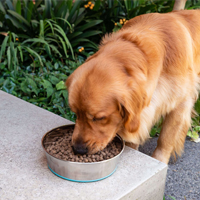
The Canine Flu: What You Need to Know
It is about that time of the year again. Sickness has come to afflict humans and canines alike, making the most wonderful time of the year a trying time for many.
In this post, we’ll be looking specifically at the canine flu and what you need to know about it.
The canine flu is a contagious viral infection derived from Influenza Virus A subtype H3N8.
There has been some talk that the canine flu is actually a derivative of the bird flu, but this is not the case because the bird flu is of a completely different subtype. Interestingly, canine flu is similar to the flu that impacts horses; it is a probable mutation from that subtype and strain.
The canine flu is generally a relatively mild condition, relatively speaking, but there are some severe cases that can develop. For the most part, however, dogs develop canine flu symptoms that come and go within 10 to 30 days without many major concerns.
There have been some case studies that have seen the condition have fatal results, but this is far from the norm.
Flu Symptoms in Dogs
80 percent of dogs who get canine flu exhibit symptoms, while 20 percent actually have no symptoms at all. These signs include:
- a cough that lasts the duration of the flu (10-30 days, as mentioned)
- a green nasal discharge
- if a dog gets the more severe form of canine influenza, he or she may develop forms of pneumonia and a high fever. The pneumonia is actually not caused by the flu but by secondary bacterial infections that can result as the immune system struggles to fight off the flu. For this reason, it makes sense to ensure that your dog’s health is closely monitored if he or she goes through canine influenza symptoms.
Treatment
When it comes to dealing with the flu in your dog, the most basic plan really is to just ride it out. Any treatment that occurs is just a matter of negotiating through the symptoms, as there is no “cure” for canine influenza and no real way to immunize your dog from ever getting it.
- What you want to do is isolate your dog from other pets for at least a week if he or she has the flu. This will minimize the chances of your other pets getting the flu and carrying it on to other animals.
- Keep your dog in a calm and quiet environment. Keep your pooch indoors as much as possible, as protecting him or her from the elements and cooler temperatures can help speed up the healing process. Make sure he or she has access to plenty of fresh water and feed him or her a nutritious diet. Don’t forget to add supplements.
- In terms of a cough, it’s usually not best to use medicine to treat the cough in cases where the cough is productive. It’s normal for a dog with the flu to cough, as this can help eliminate respiratory problems and get those sorts of secretions out of your dog’s system. If your dog has a dry cough, however, you may want to use a vet-approved suppressant.










